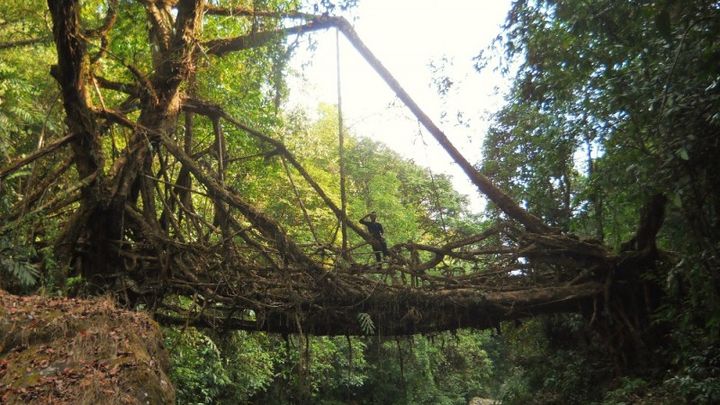
The Living Root Bridge Project
Spende geschützt
Howdy folks. My name is Patrick Rogers, and my GoFundme campaign is called the The Living Root Bridge Project
What if I were to tell you that possibly the most unusual variety of functional architecture on the face of the planet was mostly unknown and threatened with destruction?
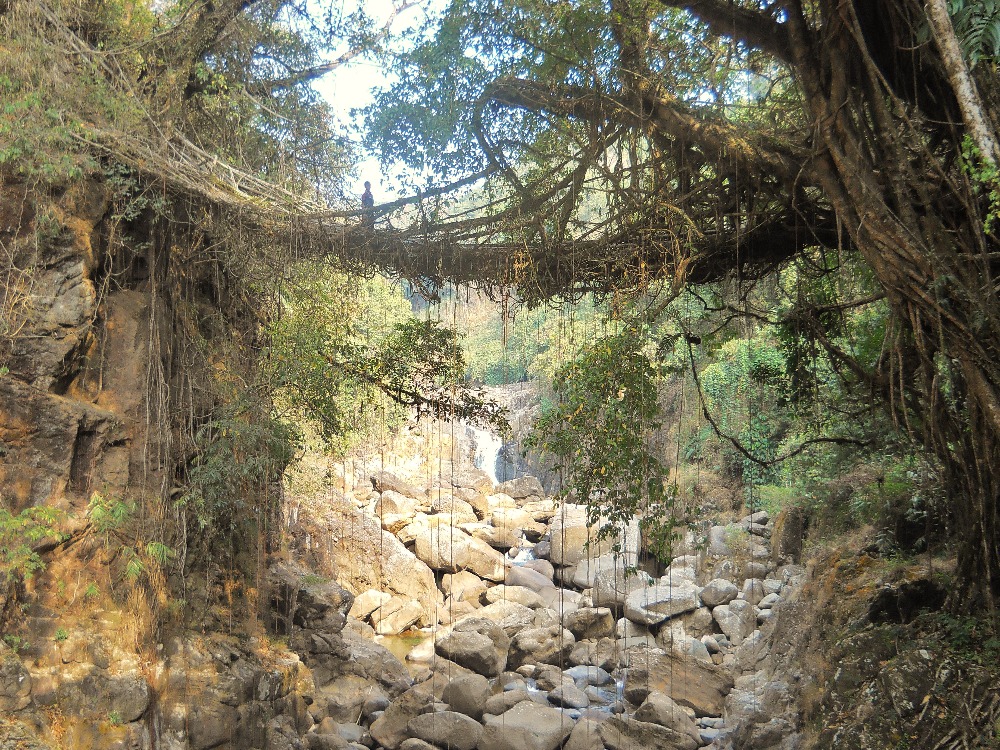
What I’m talking about are the living root structures of Northeast India. These astonishing bridges, ladders, and observation platforms are unlike any other form of functional architecture for the simple reason that instead of being built, they are grown. The War Khasi and War Jaintia peoples of the state of Meghalaya (and also the Konyak Nagas of the Indo-Myanmar border) have developed an ingenious method of using the roots of a variety of Indian fig tree to form living, yet usable, botanical structures.
But while a very few of these living root constructions have become well known, surprisingly little is understood about the practice of creating botanical architecture as a whole. It is unknown how many living root structures there are, what their geographic range is, how long they have been made, where they originated, where they are most densely concentrated, how many different techniques go into their construction, or how many different purposes they can serve. In short, we know almost nothing about them. If the practice is never properly studied, and is allowed to mostly fade away, it would be a huge loss. An entire chapter in the history of architecture would never be written, while the inspiration these, living, growing, self-strengthening engineering marvels could provide to the rest of the world would be gone forever.
As I've spelled out on my project's mission statement, the aim of The Living Root Bridge Project is to: "gather as much information about the subject of traditional botanical architecture as possible, and then to present this information in a clear, free, public, and unbiased way [at: https://livingrootbridges.com/ ]. The goal of this is to enhance the overall state of knowledge of the subject, and so in turn lead to a more comprehensive appreciation of it as a cultural achievement, as an object of scientific inquiry, and as a source of inspiration for future artistic and sustainable design endeavors. It is hoped that by raising awareness of the value and scope of this unique cultural practice, The Living Root Bridge Project will aid in its preservation."
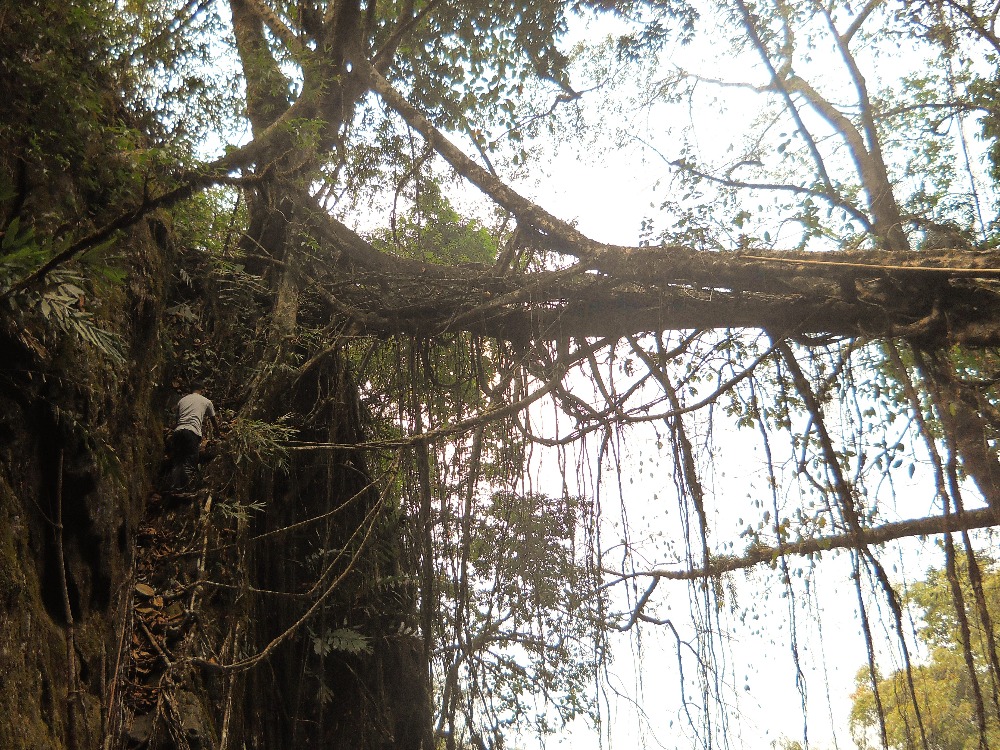
Sadly, many living root bridges are under threat of being destroyed by a number of factors, including fires, floods, road construction, and local villages having to remove them and replace them with less exceptional steel bridges due to safety hazards. While the few living root bridges that have become famous will almost certainly survive, these are only a shockingly tiny portion of the phenomenon as a whole. Most of the living root bridges have already been destroyed, and many of the rest may be soon to follow, while the practice itself, which is more important than any single bridge, is well on its way to fading out. My hope therefore is that creating a database of living root structures may lead to the preservation of at least a few of these structures, while also providing historical documentation for those places where living root bridges once were, but have now disappeared.
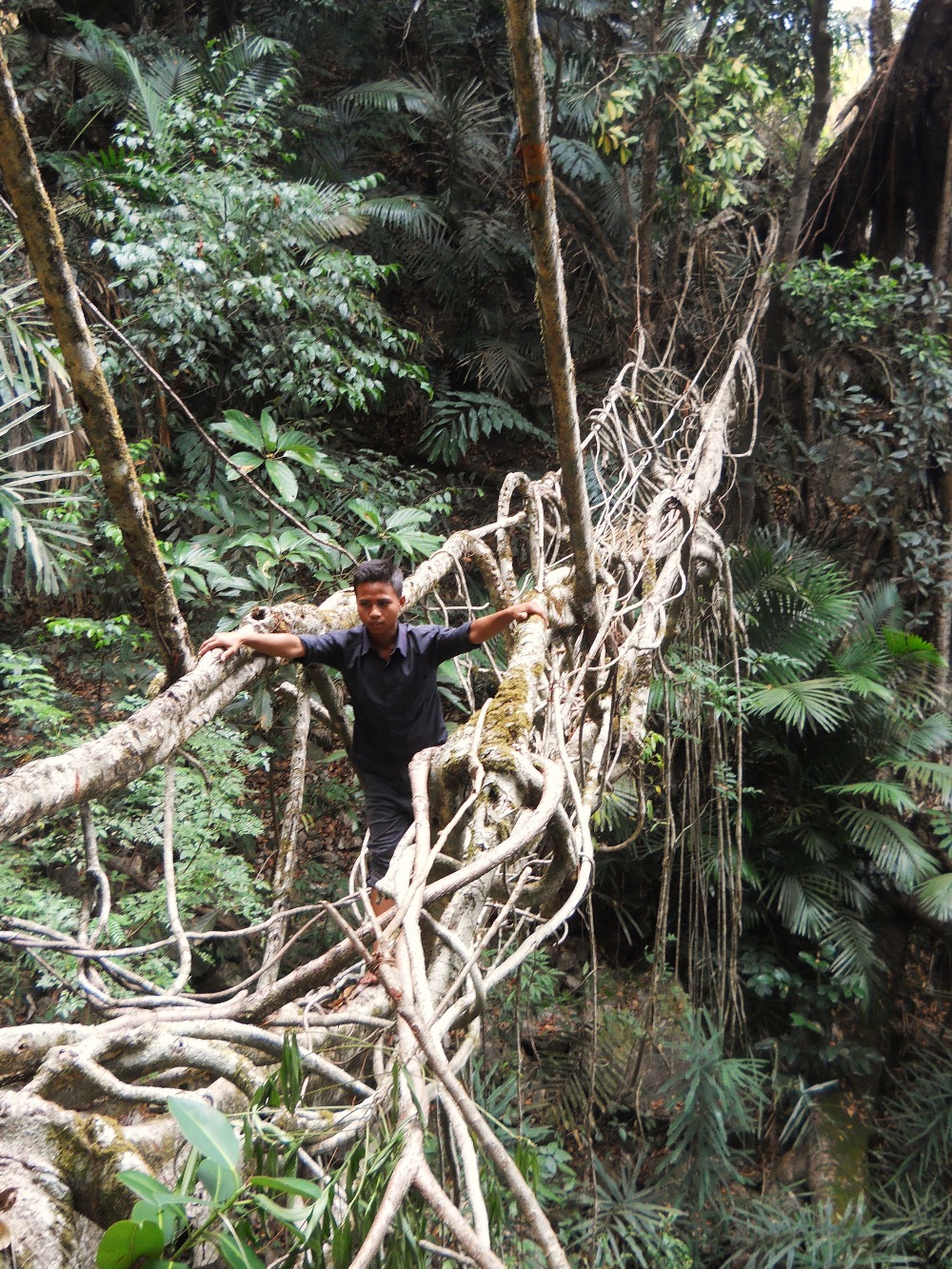
Right now, you might be saying to yourself: "That all sounds great, but how can this person possibly hope to succeed? Documenting obscure living root bridges in a super remote part of India sounds really really tough." Well, it will be, though I now have two years worth of experience. In February of 2015, I took a one month hike through the region, and came across in the vicinity of 50 living root structures. Over the course of my long walk, I developed the physical, mental, linguistic, and diplomatic skills necessary to cross huge distances of Meghalaya hill country and track down obscure living root structures.
In 2016 I officially began this project, and over a three month period traveled around Meghalaya, documenting and digging up as much information as I could about living root bridges. In the process, I collected data on about 88 living root structures (some still standing, some destroyed), which I've used to start building my database . Among other things, I looked very deeply into why only a few living root bridges remain standing and undamaged, while most have either disappeared or are on their way to disappearing.
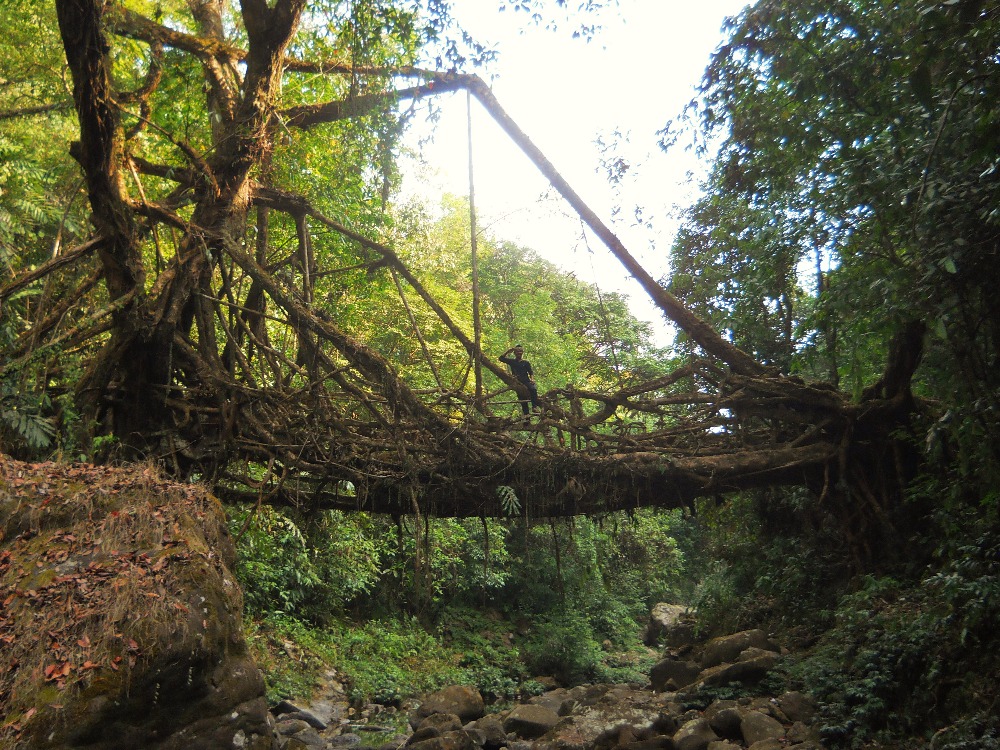
However, there's still a gigantic amount of work to be done, and one thing I never have enough of is time. That's where your donations can make a huge difference. Locating and mapping so many examples of living root architecture means hiking for months, launching several expeditions to different parts of Northeast India, and covering vast amounts of ground. Therefore, in order to make this thing work I need to be able to take multiple trips to the region over the course of the next few years, which is an expensive prospect!
Your donations will also help massively with "on the ground" expenses, such as hiring local guides, hotel and homestay fees, local transportation costs, and donations to local organizations which are geared towards promoting living root architecture or rural tourism. This way, a sizable chunk of the money that you donate to The Living Root Bridge Project will go directly to communities in the region.
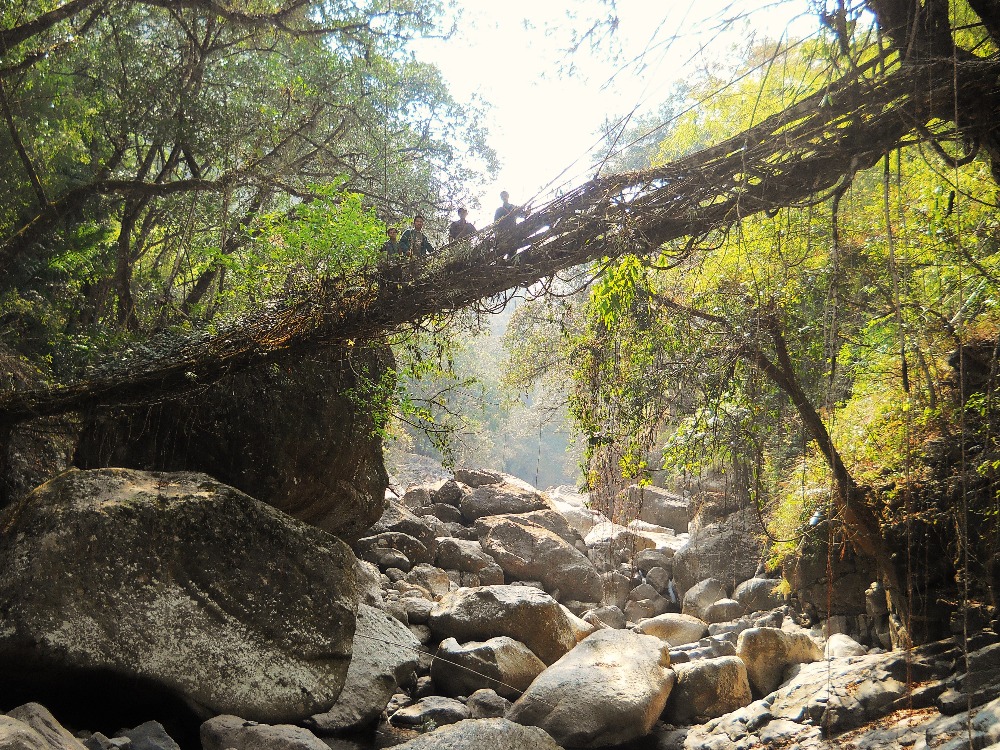
Living Root Bridges are some of the most beautiful and unusual man-made structures on the face of the earth, but they are rapidly disappearing. It is my view that these monuments to human ingenuity are genuinely important. They are a part of the heritage not just of India, but of humanity as a whole. They should not be allowed to be reduced to just a few random survivors.
With your help, I hope to take one small but vital step towards the preservation of this astonishing phenomenon.
Thank you very much
Patrick Rogers
P.S.: All photos are by me, and were taken during my long hike in Feb 2015
For more information on living root bridges, go to: The Living Root Bridge Project
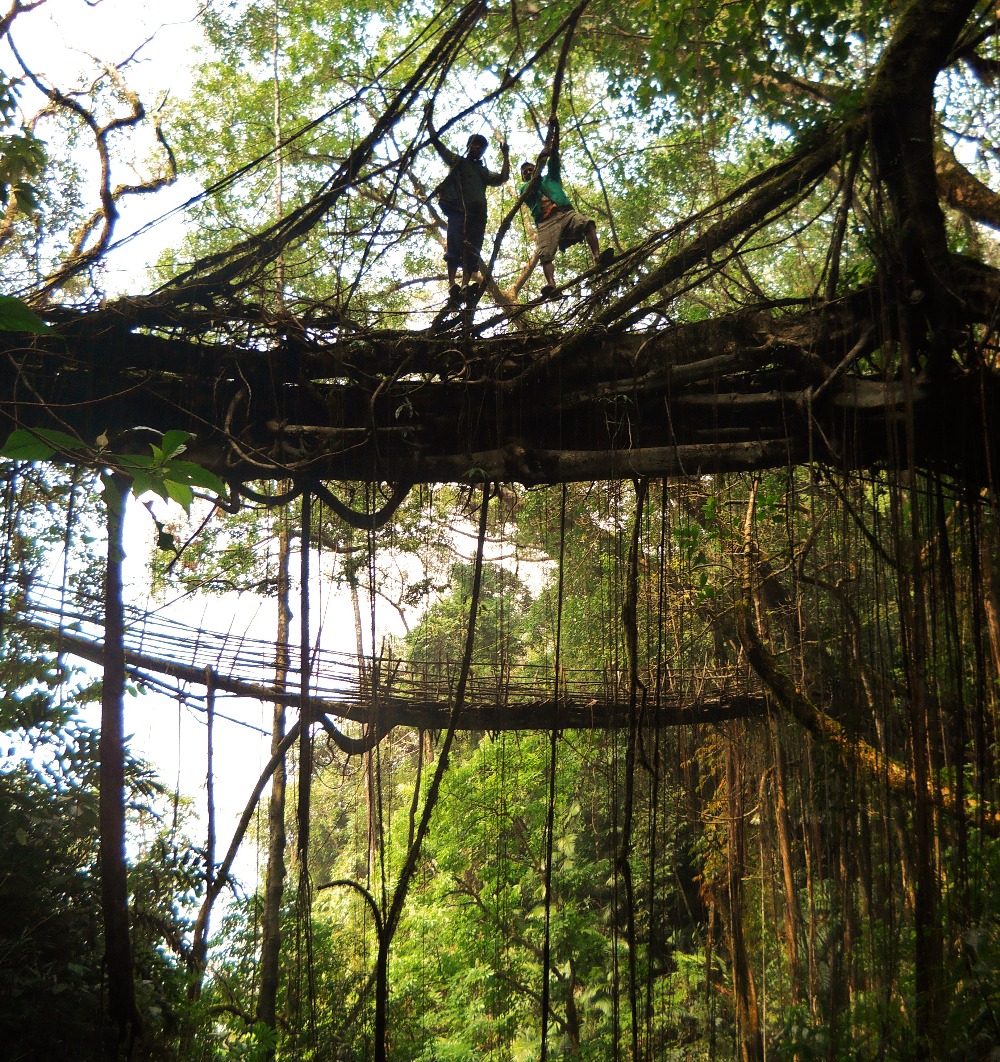
What if I were to tell you that possibly the most unusual variety of functional architecture on the face of the planet was mostly unknown and threatened with destruction?

What I’m talking about are the living root structures of Northeast India. These astonishing bridges, ladders, and observation platforms are unlike any other form of functional architecture for the simple reason that instead of being built, they are grown. The War Khasi and War Jaintia peoples of the state of Meghalaya (and also the Konyak Nagas of the Indo-Myanmar border) have developed an ingenious method of using the roots of a variety of Indian fig tree to form living, yet usable, botanical structures.
But while a very few of these living root constructions have become well known, surprisingly little is understood about the practice of creating botanical architecture as a whole. It is unknown how many living root structures there are, what their geographic range is, how long they have been made, where they originated, where they are most densely concentrated, how many different techniques go into their construction, or how many different purposes they can serve. In short, we know almost nothing about them. If the practice is never properly studied, and is allowed to mostly fade away, it would be a huge loss. An entire chapter in the history of architecture would never be written, while the inspiration these, living, growing, self-strengthening engineering marvels could provide to the rest of the world would be gone forever.
As I've spelled out on my project's mission statement, the aim of The Living Root Bridge Project is to: "gather as much information about the subject of traditional botanical architecture as possible, and then to present this information in a clear, free, public, and unbiased way [at: https://livingrootbridges.com/ ]. The goal of this is to enhance the overall state of knowledge of the subject, and so in turn lead to a more comprehensive appreciation of it as a cultural achievement, as an object of scientific inquiry, and as a source of inspiration for future artistic and sustainable design endeavors. It is hoped that by raising awareness of the value and scope of this unique cultural practice, The Living Root Bridge Project will aid in its preservation."

Sadly, many living root bridges are under threat of being destroyed by a number of factors, including fires, floods, road construction, and local villages having to remove them and replace them with less exceptional steel bridges due to safety hazards. While the few living root bridges that have become famous will almost certainly survive, these are only a shockingly tiny portion of the phenomenon as a whole. Most of the living root bridges have already been destroyed, and many of the rest may be soon to follow, while the practice itself, which is more important than any single bridge, is well on its way to fading out. My hope therefore is that creating a database of living root structures may lead to the preservation of at least a few of these structures, while also providing historical documentation for those places where living root bridges once were, but have now disappeared.

Right now, you might be saying to yourself: "That all sounds great, but how can this person possibly hope to succeed? Documenting obscure living root bridges in a super remote part of India sounds really really tough." Well, it will be, though I now have two years worth of experience. In February of 2015, I took a one month hike through the region, and came across in the vicinity of 50 living root structures. Over the course of my long walk, I developed the physical, mental, linguistic, and diplomatic skills necessary to cross huge distances of Meghalaya hill country and track down obscure living root structures.
In 2016 I officially began this project, and over a three month period traveled around Meghalaya, documenting and digging up as much information as I could about living root bridges. In the process, I collected data on about 88 living root structures (some still standing, some destroyed), which I've used to start building my database . Among other things, I looked very deeply into why only a few living root bridges remain standing and undamaged, while most have either disappeared or are on their way to disappearing.

However, there's still a gigantic amount of work to be done, and one thing I never have enough of is time. That's where your donations can make a huge difference. Locating and mapping so many examples of living root architecture means hiking for months, launching several expeditions to different parts of Northeast India, and covering vast amounts of ground. Therefore, in order to make this thing work I need to be able to take multiple trips to the region over the course of the next few years, which is an expensive prospect!
Your donations will also help massively with "on the ground" expenses, such as hiring local guides, hotel and homestay fees, local transportation costs, and donations to local organizations which are geared towards promoting living root architecture or rural tourism. This way, a sizable chunk of the money that you donate to The Living Root Bridge Project will go directly to communities in the region.

Living Root Bridges are some of the most beautiful and unusual man-made structures on the face of the earth, but they are rapidly disappearing. It is my view that these monuments to human ingenuity are genuinely important. They are a part of the heritage not just of India, but of humanity as a whole. They should not be allowed to be reduced to just a few random survivors.
With your help, I hope to take one small but vital step towards the preservation of this astonishing phenomenon.
Thank you very much
Patrick Rogers
P.S.: All photos are by me, and were taken during my long hike in Feb 2015
For more information on living root bridges, go to: The Living Root Bridge Project

Organisator
Patrick A Rogers
Organisator
Newark, DE